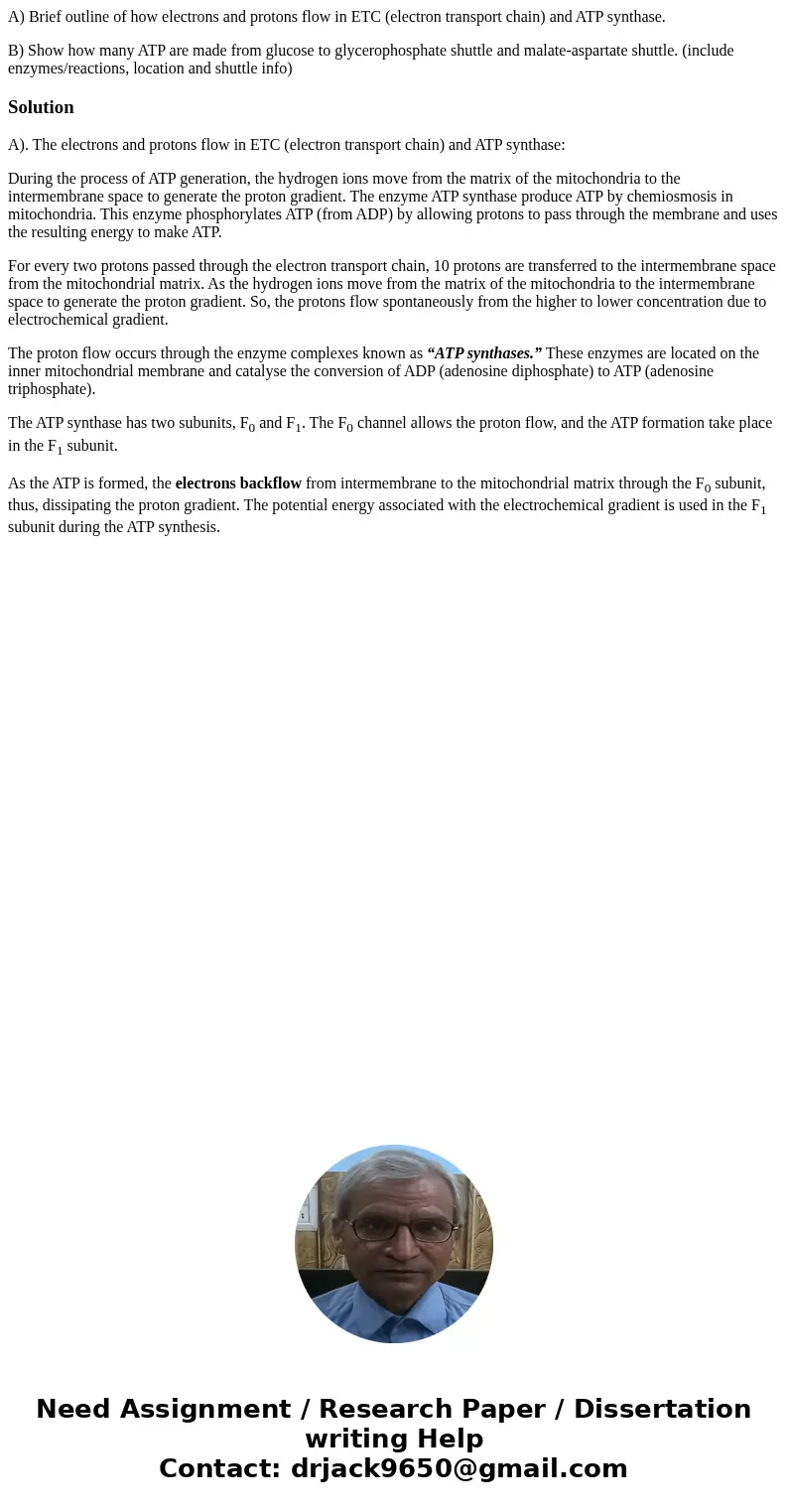A Brief outline of how electrons and protons flow in ETC ele
A) Brief outline of how electrons and protons flow in ETC (electron transport chain) and ATP synthase.
B) Show how many ATP are made from glucose to glycerophosphate shuttle and malate-aspartate shuttle. (include enzymes/reactions, location and shuttle info)
Solution
A). The electrons and protons flow in ETC (electron transport chain) and ATP synthase:
During the process of ATP generation, the hydrogen ions move from the matrix of the mitochondria to the intermembrane space to generate the proton gradient. The enzyme ATP synthase produce ATP by chemiosmosis in mitochondria. This enzyme phosphorylates ATP (from ADP) by allowing protons to pass through the membrane and uses the resulting energy to make ATP.
For every two protons passed through the electron transport chain, 10 protons are transferred to the intermembrane space from the mitochondrial matrix. As the hydrogen ions move from the matrix of the mitochondria to the intermembrane space to generate the proton gradient. So, the protons flow spontaneously from the higher to lower concentration due to electrochemical gradient.
The proton flow occurs through the enzyme complexes known as “ATP synthases.” These enzymes are located on the inner mitochondrial membrane and catalyse the conversion of ADP (adenosine diphosphate) to ATP (adenosine triphosphate).
The ATP synthase has two subunits, F0 and F1. The F0 channel allows the proton flow, and the ATP formation take place in the F1 subunit.
As the ATP is formed, the electrons backflow from intermembrane to the mitochondrial matrix through the F0 subunit, thus, dissipating the proton gradient. The potential energy associated with the electrochemical gradient is used in the F1 subunit during the ATP synthesis.

 Homework Sourse
Homework Sourse